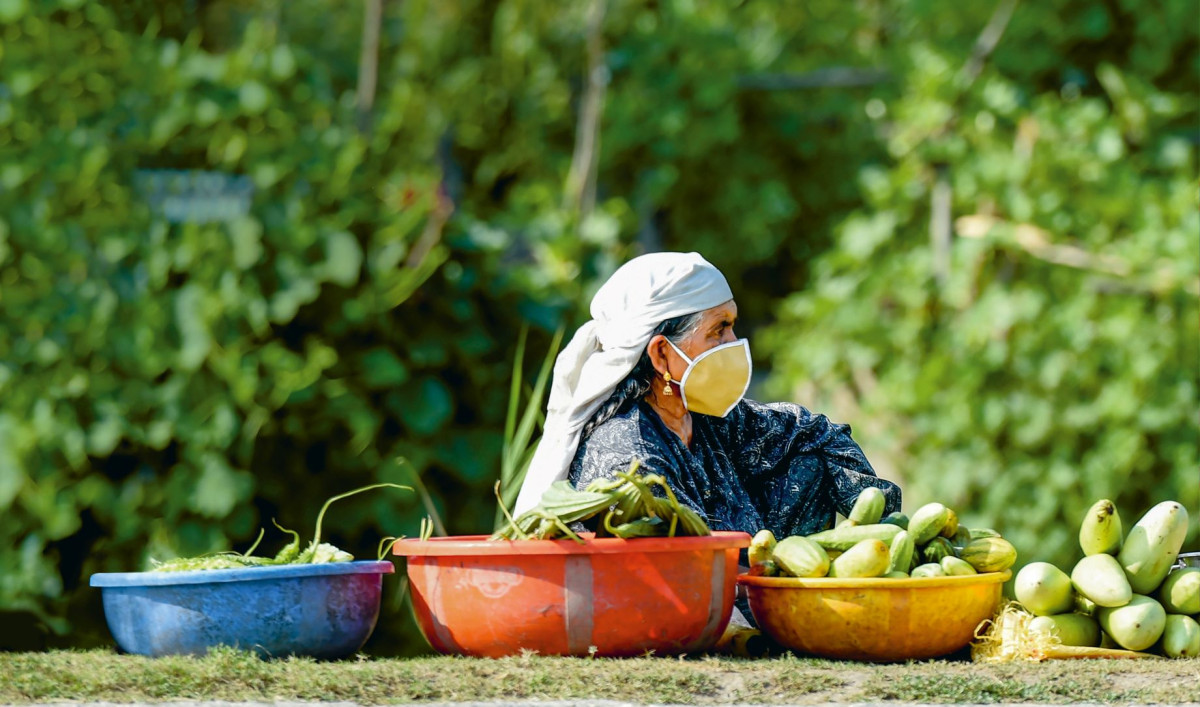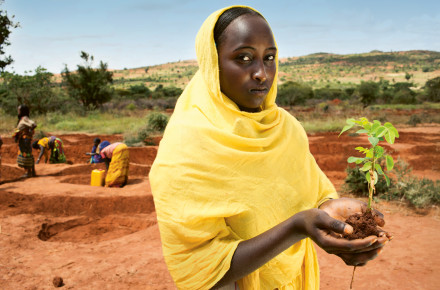The world is not on track to achieve Zero Hunger by 2030 - Global Hunger Index Report
Published: Oct 13, 2020 Reading time: 7 minutes Share: Share an articleChronic hunger affects about 690 million people worldwide, and 135 million are currently mired in an acute nutrition crisis. With the Agenda2030, the international community committed itself to defeating hunger by the year 2030, but progress towards this goal has been slow, even without the additional challenges now posed by the coronavirus pandemic.

Conflict, poverty, inequality, and the increasingly extreme consequences of climate change are driving up levels of hunger. In addition, the effects of the coronavirus pandemic alone could push millions more into hunger. It is becoming clear that our current food systems are neither fair nor stable enough to absorb such shocks, let alone to actually defeat hunger by 2030. To protect our health and secure our nutrition, we need to take a global perspective to formulate comprehensive solutions.
The Global Hunger Index (GHI) assesses levels of hunger throughout the world. The available data is analysed at global, regional, and national levels every year to produce a reference work. People in Need’s partners from Alliance2015, Welthungerhilfe and Concern Worldwide published the 2020 report. It is the 15th in this series and it focusses on our food systems and their relationships to the health of people, animals, plants, and the environment.
Key GHI Results for 2020
The world is not on the right track. It currently seems unlikely that Agenda 2030’s second objective—defeating hunger throughout the world by 2030—can be achieved. Hunger rates remain high in over 50 countries, and progress remains too slow. Although the GHI scores of 46 countries that are categorised as moderate, serious, or alarming have fallen since the reference year of 2012, hunger has worsened in another 14 countries that also fall in those categories, including Haiti, Madagascar, Liberia, and Venezuela. Between one quarter and one half of all people in these 14 countries are suffering from hunger.
Interactive map
The sharpest increase in the GHI score for any country was recorded for Venezuela, which saw its score rise from 7.2 in 2012 to 23.5 in 2020. Three countries are currently categorised as alarming (Chad, TimorLeste, and Madagascar), and 31 countries as serious. The Democratic Republic of the Congo and the Central African Republic bring up the rear. Due to insufficient data, neither country received a GHI score, but both have been preliminarily categorised as alarming. Without a global change in course, hunger rates in 37 countries will probably remain above the GHI category of low by 2030, leaving around 840 million people undernourished. It should be noted that these calculations do not take the effects of the coronavirus pandemic into account.
There are major regional differences. In sub-Saharan Africa (GHI score: 27.8) and South Asia (GHI score: 26.0), hunger levels are serious, whereas the other major regions of the world are categorised as low or moderate (GHI scores: 5.8–12.0). The situation in sub-Saharan Africa is especially problematic because more than one in five people, or 21.2 percent of the population, were not able to fully meet their caloric needs between 2017 and 2019.
This figure has been on the rise since 2014 and is now the highest number for any region, at 230 million people. Key drivers of this trend are shrinking economies, armed conflicts, and falling harvest yields due to the effects of climate change and extreme weather events. Child nutrition is an area of particular concern in sub-Saharan Africa and South Asia. In both regions, one in three children were too small for their age due to chronic undernutrition in 2019. In addition, the child mortality rate in sub-Saharan Africa was the highest in the world, with 7.8 percent of children dying before the age of five in 2018. In South Asia, child mortality is still high, at 4.1 percent, but has greatly improved since 2000 (when it was 9.2 percent).
Progress is threatened by the coronavirus pandemic and many other crises. At 18.2, the global mean GHI score falls into the category of moderate. This represents a great improvement since the reference year of 2000, when the global mean, at 28.2, was still categorised as serious. Nonetheless, much more progress needs to be made. 144 million children are still too small for their age due to chronic undernutrition. 47 million children suffer from wasting, which is a sign of acute undernutrition, and 5.3 million children died before their fifth birthday in 2018, often as a result of undernutrition.
This does not portend well for the future, since the global hunger situation is currently at great risk of deteriorating. In this year alone, millions of people saw their nutrition impacted by events such as the locust plague in eastern Africa and the global coronavirus pandemic. The United Nations calculates that another 700,000 children will suffer growth stunting for every percentage point that global GDP falls as a result of the pandemic. In addition, the number of children suffering wasting could rise by 6.7 million in low- and middle-income countries. This increase, paired with pandemicrelated restrictions on the availability of food and healthcare, could result in nearly 130,000 more children dying.
Recommendations
The future will bring more crises in terms of health, nutrition, the environment, and the economy. These challenges can only be overcome through an integrated, global effort. Our actions are increasingly damaging our planet, partly because of how our food systems are set up. We need to reform these systems to be more fair, sustainable, and resilient, making it a priority to ensure that everyone’s right to food is met.
The key is to create a healthy and equitable nutrition environment that offers small-scale farmers, fishers, and producers a fair and sufficient income. This also means protecting human rights and the environment throughout the value chain. By supporting circular nutrition economies, more resources can be recycled and environmental pollution can be avoided, allowing ecosystems to regenerate. Governments must also develop universal healthcare and social security systems, working together with donors and civil society to ensure that they function as well as possible. In addition, unfair trade practices have to be rectified, and fair and sustainable development promoted instead.
What Is the Global Hunger Index?
The Global Hunger Index (GHI) is a multi-dimensional tool for measuring hunger and undernutrition. GHI scores create a comprehensive picture of global hunger by combining the following four indicators:
a) Undernourishment: the percentage of people who cannot meet their caloric needs;
b) Child wasting: the percentage of children under five years of age who weigh too little for their size (an indicator of acute undernutrition);
c) Child stunting: the percentage of children under five years of age who are too short for their age (an indicator of chronic undernutrition);
d) Child mortality: the percentage of children who do not live to see their fifth birthday.
GHI scores are based on the values of these four indicators and represent the hunger situation in a given country on a 100-point scale, with 0 being the best score, indicating a total absence of hunger, and 100 being the worst. Each country’s GHI score falls into one of five categories: low, moderate, serious, alarming, or extremely alarming (in ascending order of severity). Statistics from 132 countries were evaluated for the 2020 GHI. Reliable data were available for all four indicators for 107 of these countries, allowing their GHI scores to be generated; these countries are all represented in the rankings. Data sets for a further 25 countries were incomplete, precluding calculations of their GHI scores. Instead, most of these countries were tentatively assigned the most fitting GHI category based on the available data; however, for seven countries, even such tentative categorisations were impossible.
The 2020 GHI is based exclusively on data sourced from multilateral agencies such as the UN. Undernutrition was assessed based on data for 2017 to 2019, and child mortality rates use statistics for 2018. For the other two indicators, wasting and stunting, the latest available data cover the period from 2015 to 2019. The report also provides the GHI scores for the years 2000, 2006, and 2012, to provide points of reference that facilitate a long-term analysis of developments over time. However, figures in the various annual reports cannot be directly compared with each other because the data are continuously being updated, the countries included also vary from year to year, and, in addition, the ranking system is adjusted from time to time.



